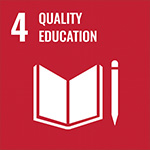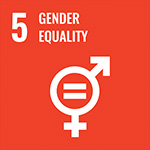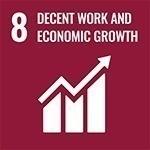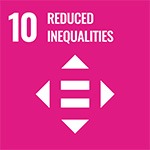People
People with the skills for present and future challenges, working in a respectful, diverse and inclusive environment.
Material Topics
Valuing human capital: (GRI disclosure: 404-1, 404-2, 404-3)
Actions and recognition programs to value the performance of human capital (employees) in the company.
Employee well-being, health and safety: (GRI disclosure: 403-1, 403-2, 403-3, 403-4, 403-5, 403-6, 403-8, 403-9, 403-10)
Guarantee employees work with decent, safe and healthy conditions.
Diversity, inclusion, and equality: (GRI disclosure: 405-1, 405-2, 406-1, 2-7, 2-8)
Development of an environment conducive to diversity, inclusion and belonging for the full range of identities and individual choices.
Extra Topic: (GRI disclosure: 2-30)
Required GRI Disclosure
GRI 2-7 Employees
Bracell understands that employees are an essential strategic asset for good results and business sustainability. The company respects and supports the Universal Declaration of Human Rights and is committed to providing a safe, healthy and productive work environment for all employees. Specifically, Bracell:
- Respects the diversity of workers, including race, religion and gender and does not tolerate any type of discrimination or abuse in this regard;
- Respects freedom of association in all business units;
- Complies with all requirements for hiring employees, including priority recruitment of qualified local workers;
- Adheres to the International Labor Organization Declaration on Fundamental Principles and Rights at Work;
- Offers all employees a safe, clean and properly equipped workplace;
- Invests in behavioral and occupational safety training;
- Does not tolerate child or slave labor;
- Works to increase employees’ awareness of the sustainability of the business.
In 2021, Bracell had a total of 4,726 employees, a growth of 26% compared to 2020. Regarding the hiring of local labor, in 2021, 100% of employees belonged to or lived in municipalities located in the areas where Bracell operates.
Information on employees by gender, location of operation and type of contract
| 2020 | |||||||||
| Bahia | São Paulo | Bracell | |||||||
| Male | Female | Total | Male | Female | Total | Male | Female | Total | |
| Permanent employees | 1,182 | 338 | 1,520 | 1,692 | 443 | 2,135 | 2,874 | 781 | 3,655 |
| Temporary employees | 47 | 29 | 76 | 9 | 3 | 12 | 56 | 32 | 88 |
| Employees without a fixed working day | 0 | 0 | 0 | 0 | 0 | 0 | 0 | 0 | 0 |
| Full-time employees | 1,225 | 367 | 1,592 | 1,701 | 446 | 2,147 | 2,926 | 813 | 3,739 |
| Part-time employees * | 4 | 0 | 4 | 0 | 0 | 0 | 4 | 0 | 4 |
| Total | 1,229 | 367 | 1,596 | 1,701 | 446 | 2,147 | 2,930 | 813 | 3,743 |
| 2021 | |||||||||
| Bahia | São Paulo | ||||||||
| Male | Female | Total | Male | Female | Total | Male | Female | Total | |
| Permanent employees | 1,225 | 351 | 1,576 | 1,402 | 454 | 1,856 | 2,627 | 805 | 3,432 |
| Temporary employees | 14 | 6 | 20 | 25 | 16 | 41 | 39 | 22 | 61 |
| Employees without a fixed working day | 169 | 35 | 204 | 1,173 | 60 | 1,233 | 1,342 | 95 | 1,437 |
| Full-time employees | 1,070 | 332 | 1,392 | 2,600 | 530 | 3,130 | 3,670 | 862 | 4,532 |
| Part-time employees * | 0 | 0 | 0 | 0 | 0 | 0 | 0 | 0 | 0 |
| Total | 1.239 | 357 | 1,596 | 2.600 | 530 | 3,130 | 3,839 | 887 | 4,726 |
* In 2021, Bracell had no part-time employees. In previous years, only participants in the Young Apprentice Program fell into this category.
GRI 2-8 Workers who are not employees
| 2020 | 2021 | |||||
| Bahia | São Paulo | Bracell | Bahia | São Paulo | Bracell | |
| Male | 2,462 | 3,029 | 5,491 | 3,414 | 5,946 | 9,360 |
| Female | 72 | 320 | 392 | 130 | 494 | 624 |
| Total | 2,534 | 3,349 | 5,883 | 3,544 | 6,440 | 9,984 |
From 2019 to 2021, Bracell was carrying out Project Star, the construction of the two new flexible lines for the expansion of the Lençóis Paulista (SP) factory. Project Star involved the hiring of more than 36,000 third parties from 2019 to June 2022. Although the work for the construction of the flexible lines was largely completed in 2021, in 2022 activities are still ongoing as part of the project. In 2021 alone, Bracell employed, through Project Star, 14,551 third parties.
| Number of contracted third parties (Project Star) | |
| YEAR | Number of contracted third parties |
| 2019 | 4,075 |
| 2020 | 16,530 |
| 2021 | 14,551 |
| 2022 | 859 |
| General Total | 36,015 |
Note: consolidated refers to the total number of hires up to June 2022.
| Project Star (third party contractors) | STATUS | PEOPLE |
| SÃO PAULO1 | 12,075 | |
| BAHIA | 5,733 | |
| ESPÍRITO SANTO | 3,576 | |
| MARANHÃO | 2,743 | |
| MINAS GERAIS | 2,112 | |
| PARANÁ | 1,421 | |
| PIAUÍ | 1,369 | |
| RIO DE JANEIRO | 1,367 | |
| SERGIPE | 867 | |
| PARÁ | 856 | |
| PERNAMBUCO | 719 | |
| ALAGOAS | 667 | |
| MATO GROSSO DO SUL | 402 | |
| RIO GRANDE DO NORTE | 338 | |
| CEARÁ | 313 | |
| RIO GRANDE DO SUL | 312 | |
| SANTA CATARINA | 311 | |
| GOIÁS | 204 | |
| PARAÍBA | 162 | |
| ESTRANGEIRO | 149 | |
| TOCANTINS | 76 | |
| MATO GROSSO | 59 | |
| RONDÔNIA | 54 | |
| AMAPÁ | 48 | |
| FEDERAL DISTRICT | 37 | |
| AMAZONAS | 31 | |
| RORAIMA | 10 | |
| ACRE | 4 | |
| General Total | 36,015 |
1 From the cities of Macatuba, Bauru, Agudos, Pederneiras, Barra Bonita, Igaraçu do Tietê, São Manuel, Areiópolis, Jaú, Dois Córregos, Lençóis Paulista and other cities in the state of São Paulo located outside the region where Bracell operates.
GRI 2-30 Collective bargaining agreements
Operations in Bahia
All employees up to management level are covered by collective agreements. Managers and above are not.
Operations in São Paulo
All employees up to the coordination level are covered by collective agreements. Coordinators and above are not.
GRI 3-3 (403) Management of material topic: Health and Labor Safety
Ensuring the physical and mental integrity and health of employees is an objective of Bracell, which applies the best practices of recognition, assessment and control of occupational risks and accidents.
Bracell has Safe Behavior and Always Alert programs, which cover all employees, including service providers. Safety inspections are also carried out, with the objective of evaluating risk behaviors and working conditions, always in search of continuous improvement and strengthening of a safety culture at work.
In compliance with contracted management procedures, the company performs every six months an audit of legal requirements, ensuring compliance and compliance with applicable laws. (Read more in GRI disclosure 408-1)
Bracell has legal commitments to comply with Brazilian legislation, following
regulatory standards for occupational health and safety. Management is updated with monthly reports and impacts are monitored throughout the current year.
Faced with the Covid-19 pandemic, respiratory diseases in general have come to be
identified as specific (non-occupational) health risks because they have similar symptoms and are contagious.
The approach developed by the health team consists of identifying workers with flu-like symptoms, who are immediately removed and referred to perform the RT-PCR test on the third day of symptoms. For cases in which the result is positive for the new coronavirus, a specific prescription is provided to control the symptoms and the employee is instructed to carry out social isolation. The health service carries out daily monitoring of the employee, through WhatsApp, and, if the clinical condition worsens, the employee is referred for evaluation by a specialist and, if necessary, for hospitalization.
GRI 403-1 Occupational health and safety management system
Bracell has an integrated Safety and Health management system that follows the Regulatory Norms for Occupational Safety and Medicine, required by Brazilian legislation. The professionals responsible for the management system are Bracell’s own employees, who are members of the Specialized Service in Safety Engineering and Occupational Medicine (SESMT). Activities and workplaces are detailed by the health and safety management system, covering all workers, in accordance with the requirements of Regulatory Standard 9, which assesses and controls occupational exposures, and Regulatory Standard 7, which determines the implementation in companies of the Occupational Health Medical Control Program (PCMSO) with the objective of promoting and preserving the health of employees.
In addition to being based on the Regulatory Norms for Safety and Occupational Medicine, the Occupational Health and Safety System has implemented the Environmental Risk Prevention Program (PPRA); and the Occupational Health Medical Control Program (PCMSO), in compliance with labor legislation, pursuant to ordinance 3,214/78 of the Ministry of Labor. These programs trigger other procedures, which describe and detail the standards and norms applicable to all activities performed by the employees themselves. The company’s Integrated Policy sets this standard for its contractors.
At its operations in Bahia, Bracell has a management system implemented in accordance with the Integrated Management System (SIG) Manual. This management system follows the standards of ISO 9001, ISO 14001 and CERFLOR.
In São Paulo, at the end of 2021, the System for the Management of Hazards and Risks for Health and Safety at Work was implemented for industrial areas, facilitating compliance with the new update of 1 and in line with continuous improvement of management systems. The system covers all factory employees. During the year, the system for monitoring applicable legislation was upgraded with new software, with a module for managing hazards and risks and focusing on monitoring the exposure of employees at the São Paulo operations.
Aiming for continuous improvement and ensuring a continuous preventive approach at Bracell, there was an increase in the number of professionals in the Occupational Safety area, with the incorporation of the Forestry Work Safety Coordination covering the activities of the nursery, forestry, harvesting and automotive maintenance and logistics – covering the activities of transporting people, loading, road maintenance, wood and pulp transport. Security teams were reinforced and restructured to support the necessary coordination. A review of internal procedures in the safety area was carried out, aiming at the continuous improvement of compliance with safety indicators and legislation.
Project Star
In 2021, Bracell maintained the health and safety program developed specifically for the operation of Project Star (construction of the two new flexible lines at the São Paulo plant).
Due to the expansion works at the São Paulo site that took place during the Covid-19 pandemic, health risk management protocols were developed in accordance with the recommendations and safety measures of the World Health Organization (WHO) and the Ministry of Health. In addition, the company maintained a communication network with information and guidance shared via WhatsApp, radio, and bulletin boards, while also providing telephone numbers for reporting health events in relation to the pandemic.
The Project Star Safety Committee conducted regular meetings and strengthened the Emergency Action Plan (EAP) for the operation. During the integration process, the outsourced employees received health and safety training supported by Bracell and carried out by a specialized company. They also participated in training focused on NR-18, carried out by the companies themselves with their employees.
GRI 403-2 Hazard identification, risk assessment and incident investigation
At the São Paulo operations, a Hazardousness Report is carried out to assess all functions and activities performed by employees. The Risk Management Program
is applied to the identification of risks, and control and prevention measures (collective protection equipment and administrative, training and individual protection measures). Assessments are carried out by a specialized and contracted company, guaranteeing the use of techniques and compliance with the most up-to-date legislation.
All accidents and incidents that occur at Bracell’s operations in São Paulo are recorded and investigated through Root Cause Analysis. Occupational Safety Inspection Reports (RIST) are continuously prepared by occupational safety professionals, in order to comply with regulations and daily improvement. In addition, all workers can refuse to carry out a certain activity if they do not feel safe. If they feel unsafe, they simply need to fill in the right of refusal field of the Work Release and the Always Alert (this is the most widely used tool in the forestry area, it seeks to identify substandard conditions and practices, incidents and use of the right of refusal). To protect workers from retaliation, Bracell has policies and processes in place to protect against intimidation, threats, or acts that could negatively impact employment or work engagement, such as termination, demotion, loss of pay, punishment and any other unfavorable treatment.
To assess and improve the occupational health and safety management systems, action plans are created for hazards and risks identified in the PGR with opportunities for improvement.
The company has a subcommittee at the Internal Accident Prevention Commission (CIPA) focused on continuous improvement, where all the “before and after” actions taken are recorded. Work Safety Inspection Reports (RIST) are also developed, prepared by safety professionals, with the aim of recommending daily improvements.
At the company’s Bahia operations, the organization develops its work based on legal programs, having as its main document the Environmental Risk Prevention Program (SESMT). Based on the development criteria, this establishes the preparation of the Technical Report on Environmental Working Conditions (LTCAT) to determine areas that are entitled to hazards and risk control measures. These programs have action plans that guide prevention efforts. The company has a Health and Safety management system, developed and implemented by SESMT. Professionals who make up the SESMT have appropriate qualifications as established by NR 4. The procedures establish requirements that must be routinely met and specific control measures according to the risk scenarios.
In cases of accidents and incidents, the causes are investigated and analyzed with the participation of managers, area owners, the Occupational Safety team, Internal Accident Prevention Commission (CIPA) and those directly involved in the occurrence. This process, based on Bracell’s internal safety procedures, aims to identify causes and adopt treatment actions and record lessons learned, seeking to avoid recurrence.
All employees have a prevention card, containing 10 self-assessment criteria, which must be carried, along with the company’s identification badge. This card describes the right, in any abnormal situation, to interrupt activity, to immediately communicate to your leader and to only consent to proceed when the risk has been neutralized/eliminated.
The result of these processes is evaluated internally every month by the Health and Safety team and shared with the management in these areas, in monthly safety meetings, and with the board and management, in a fortnightly meeting on occupational safety and health. In these meetings, indicators are presented and actions for continuous improvement of processes are discussed.
GRI 403-3 Occupational health services
The occupational health service acts directly in the identification, treatment and
monitoring of employee health in the work environment, associating the quality of the workspace with the health of employees of the companies. It is responsible for maintaining well-being and preventing illness and other problems that may arise in this work environment. The medical department is composed of an Occupational Physician, Occupational Nurse and Nursing Technicians who make up the SESMT/SESTR.
Through the Occupational Health Medical Control Program (PCMSO), Bracell carries out periodic medical examinations, with the objective of promoting the preservation of the health of its employees. These exams are indicated according to the occupational risks to which the workers are exposed, and, in the case of altered results, these employees are removed from their duties, treated according to individual needs and monitored until the exams are normalized.
Employees and third parties have an outpatient service with nursing and medical assessments available. In case of need, the employee is referred to carry out complementary examination and follow-up with a specialist.
GRI 403-4 Worker participation, consultation and communication with workers regarding occupational health and safety
At its operations in Bahia, Bracell, in order to engage the workforce and strengthen cultural values, has the Safety Behavior and Journey safety programs 100% Safe.
The Safe Behavior Program (PCS) aims to identify compliance in the Health and Safety system through a positive approach, and to create opportunities to improve people’s behavior, seeking to evolve the safety culture. It is a time of observation and interaction with the workforce, with a preventive and non-punitive bias.
The 100% Safe Journey is a program that recognizes good practices and solid standards on the part of employees. Award-winning employees receive a button, which can be in the bronze, silver or gold categories. This recognition comes from both the security team and the managers and is applied to the entire workforce, that is, employees and outsourced workers.
In 2021, 58 employees were recognized for their safe attitude and behaviours. They received their awards in a ceremony attended by the company’s board of directors. The program also recognized the safety performance in the areas, awarded with the bronze, silver and gold helmet trophy, reflecting the result of the importance of teamwork.
At the São Paulo operations, with the objective of achieving the goal of zero accidents, new internal auditors were trained for the Safe Behavior and Always Alert Programs. Both are tools with a preventive and never punitive bias. The Always Alert program is mostly applied to the forestry area and seeks to identify conditions and practices that require improvements, incidence and the use of the right of refusal. The Safe Behavior Program, mostly applied at the factory, seeks to develop awareness of safe behaviors. Bracell has trained internal auditors to identify possible risk behaviors in their areas and to mitigate them.
Internal Accident Prevention Week
In 2021, the Internal Week for the Prevention of Accidents at Work and Rural Work (SIPAT/SIPATR) took place during the pandemic, under the theme “We are a Team of Experts in Prevention”, carried out for employees in Bahia and São Paulo, as well as interested third parties. The Week was organized by the Internal Accident Prevention Commission (CIPA/CIPATR).
As part of the program, there were online lectures and daily outdoor safety training among teams with Cipeiros participating, among other activities. In 2021, the new format of the Task Safety Analysis (AST) was also implemented, bringing a better understanding among the workforce in the identification of hazards and risks and control measures for the execution of a safe activity. There was also a review and strengthening of the OPA (Watch, Plan and Act) program, which aims to identify risk conditions, register them and deal with them.
GRI 403-5 Training of workers in occupational health and safety
To ensure that employees follow adequate and safe procedures during the performance of their activities, the company carries out training in Occupational Health and Safety (OSH), with the aim of providing theoretical and practical knowledge, reducing the probability of accidents at work.
All employees are trained in easy-to-understand language. Training begins immediately after admission, when the employee begins the process of integration into the company, and covers 100% of the employees.
At the São Paulo operations, Bracell carries out first aid training for employees, both at the factory and in the forestry operations, preparing the teams for urgent and emergency primary care.
The instructors are the health workers themselves (doctors, nurses and occupational nursing technicians) who are properly trained for the proposed topics. Training is offered free of charge during working hours and there is a practical evaluation at the end of the training to demonstrate the effectiveness of what has been taught.
GRI 403-6 Promotion of workers’ health
Health management seeks to promote well-being and health, in addition to preventing diseases, through individual and collective guidance on topics such as periodic examinations, annual health campaigns, including awareness of sexually transmitted infections, respiratory diseases and influenza vaccination. There are also campaigns against dengue, prevention of breast cancer (pink October) and prostate cancer (blue November), guidelines on healthy eating, regular physical activity, relaxation and stretching activities, among others.
In pursuit of the physical and mental well-being of its employees, the company also carries out Challenge Bracell, a program aimed at improving quality of life, encouraging healthy eating and the practice of regular physical activity.
Health and dental plans are available for all employees and their dependents, covering the entire national territory. In addition, there are agreements with drugstore chains, opticians, gyms and educational institutions, in addition to entities such as the Social Service of Industry (SESI) and others that offer employees access to sports and leisure activities.
GRI 403-8 Workers covered by an occupational health and safety management system
All Bracell service providers are monitored by a specific system under the management of the Third-Party Human Resources (HR) area, ensuring compliance with laws and integration before the start of activities. Audits are carried out every six months. In December 2021, São Paulo’s forestry operations were externally certified against Cerflor’s requirements, which covered management practices and occupational health and safety procedures.
Workers covered by the occupational health and safety management system:
Operations in Bahia:
Own employees 1,596 (100%)
Third parties 3,544 (100%)
Operations in Sao Paulo:
Own employees 3,130 (100%)
Third parties 6,440 (100%)
GRI 403-9 Accidents at work
In Bracell’s operations in São Paulo, six accidents involving employees with leave license, and five accidents involving third parties with lost time, were recorded. In Bahia, there were no accidents involving employees or third parties with leave. There were no fatal accidents in either location.
The following indices were calculated based on 1,000,000 hours worked and no worker was excluded from the GRI disclosure report.
Employees (Bahia)
| BA Forestry | Number of accidents (including fatalities) | Accident rate | ||
| CAF | SAF | CAF | SAF | |
| 2019 | 0 | 0 | 0.00 | 0.00 |
| 2020 | 0 | 0 | 0.00 | 0.00 |
| 2021 | 0 | 0 | 0.00 | 0.00 |
| BA Industrial | Number of accidents (including fatalities) | Accident rate | ||
| CAF | SAF | CAF | SAF | |
| 2019 | 2 | 2 | 1.23 | 1.23 |
| 2020 | 1 | 0 | 0.57 | 0.00 |
| 2021 | 0 | 3 | 0.00 | 1.60 |
Third Parties (Bahia)
| BA Forestry | Number of accidents (including fatalities) | Accident rate | ||
| CAF | SAF | CAF | SAF | |
| 2019 | 1 | 2 | 0.18 | 0.35 |
| 2020 | 0 | 3 | 0.00 | 0.59 |
| 2021 | 0 | 3 | 0.00 | 0.62 |
| BA Industrial | Number of accidents (including fatalities) | Accident rate | ||
| CAF | SAF | CAF | SAF | |
| 2019 | 0 | 3 | 0.00 | 1.74 |
| 2020 | 1 | 1 | 1.04 | 1.04 |
| 2021 | 0 | 3 | 0.00 | 2.17 |
Employees (São Paulo)
| SP Forestry (Lençóis Paulista) | Number of accidents (including fatalities) | Accident rate | ||
| CAF | SAF | CAF | SAF | |
| 2019 | 1 | 17 | 0.90 | 15.80 |
| 2020 | 1 | 29 | 0.72 | 21.00 |
| 2021 | 3 | 46 | 1.47 | 22.60 |
| SP Industrial (Lençóis Paulista) | Number of accidents (including fatalities) | Accident rate | ||
| CAF | SAF | CAF | SAF | |
| 2019 | 1 | 6 | 0.60 | 4.10 |
| 2020 | 2 | 26 | 0.93 | 12.08 |
| 2021 | 3 | 13 | 1.12 | 5.98 |
Third Parties (São Paulo)
| SP Forestry (Lençóis Paulista) | Number of accidents (including fatalities) | Accident rate | ||
| CAF | SAF | CAF | SAF | |
| 2019 | 2 | 40 | 0.50 | 10.60 |
| 2020 | 2 | 77 | 0.24 | 9.35 |
| 2021 | 4 | 68 | 0.43 | 7.25 |
| SP Industrial (Lençóis Paulista) | Number of accidents (including fatalities) | Accident rate | ||
| CAF | SAF | CAF | SAF | |
| 2019 | 3 | 11 | 5.40 | 20.10 |
| 2020 | 0 | 11 | 0.00 | 60.20 |
| 2021 | 1 | 7 | 2.10 | 14.70 |
CAF: with leave
SAF: without leave
In order to eliminate the danger and minimize the risk of accidents at work, in 2021 the Awareness Program was continued, aimed at raising awareness about the adoption of desirable and safe behaviors, including actions to raise awareness of their implementation, with the support of leadership. Bracell’s objective is to strengthen people’s integrity, based on the reformulation of the Daily Safety Dialogues (DDS), making the leader a protagonist in the dissemination of good practices. The company has a goal of zero accidents, a guideline that is part of the health and safety management system and addressed in the Integrated Policy and Code of Conduct.
GRI 403-10 Work-related ill health
There were no absences due to occupational diseases of employees and third parties in the period covered by the report. Data was obtained through the management of the action plan of legal programs and health actions. There was also no exclusion of any worker in the report of this disclosure.
GRI 3-3 (404) Management of material topic: Training and Education
Bracell has a corporate culture of horizontality that encompasses sharing and seeking guidance and recommendations between employees and their leaders, on an individual basis, as a complement to the training and qualifications carried out throughout the year. In both, Bracell’s practices and protocols and the main concerns regarding the company’s business, operations and activities are reinforced. The values “Teams that complement each other” and “Owner’s View” are part of the daily practices of executing strategic planning and managing priority socio-environmental issues.
Bracell’s training program provides training required by law and others, with the aim of promoting the development of skills and competences of employees, so that they contribute to their professional development and are aligned with the challenges and objectives of each area.
The company conducts in-person and online training. Training is encouraged, recommended and requested by area managers, in accordance with Bracell’s training policies.
GRI 404-1 Average hours of training per year, per employee
In 2021, the average training hours for employees at the São Paulo operations was 213 hours for men and 51 hours for women. In Bahia, the average for men was 74 hours and, for women, 32 hours. Bracell has a corporate culture of horizontality that encompasses sharing and seeking guidance and recommendations among employees and their leaders, individually, as a complement to the training and qualifications carried out throughout the year. In both, Bracell’s practices and protocols and the main concerns regarding the company’s business, operations and activities are reinforced. The values “Teams that complement each other” and “Owner’s View” are part of the daily practices of executing strategic planning and managing priority socio-environmental issues.
Average hours of employee training in the reporting period, by gender (Bahia).
| Total number of employees | Hours of training | Average hours of training (h) | ||||
| 2020 | 2021 | 2020 | 2021 | 2020 | 2021 | |
| Male | 1,229 | 1,239 | 42,645.68 | 92,233.00 | 34.69 | 74.44 |
| Female | 367 | 357 | 3,830.47 | 11,218.00 | 10.43 | 31.42 |
| Total | 1,596 | 1,596 | 46,476.15 | 103,451.00 | 29.12 | 64.81 |
Average hours of employee training in the reporting period, by employee category (Bahia)
| Total number of employees | Hours of training | Average hours of training (h) | ||||
| 2020 | 2021 | 2020 | 2021 | 2020 | 2021 | |
| Directorship | 3 | 3 | 29.50 | 5.00 | 9.83 | 1.66 |
| Senior Manager | 5 | 7 | 158.00 | 119.00 | 31.60 | 17.00 |
| Management | 31 | 33 | 943.35 | 1,112.00 | 30.43 | 33.69 |
| Leadership/Coordination | 59 | 115 | 1,593.23 | 2.381,00 | 27.00 | 20.70 |
| Technical/Supervision | 513 | 59 | 2,223.38 | 6,093.00 | 4.33 | 103.27 |
| Administrative | 189 | 258 | 4,500.48 | 7,466.00 | 23.81 | 28.93 |
| Operational | 785 | 1121 | 36,906.30 | 86,276.00 | 47.01 | 76.96 |
| Trainees | 11 | 0 | 121.91 | 0.00 | 11.08 | 0.00 |
| TOTAL | 1,596 | 1,596 | 46,476.15 | 103,452.00 | 29.12 | 64.81 |
Average hours of employee training in the reporting period, by gender (São Paulo)
| Total number of employees | Hours of training | Average hours of training (h) | ||||
| 2020 | 2021 | 2020 | 2021 | 2020 | 2021 | |
| Male | 1,701 | 2,600 | 99,451.00 | 554,448.00 | 58.46 | 213.24 |
| Female | 446 | 530 | 10,196.00 | 26,803.00 | 22.86 | 50.57 |
| Total | 2,147 | 3,130 | 109,647.00 | 581,251.00 | 51.06 | 185.70 |
Average hours of employee training in the reporting period, by employee category (São Paulo)
| Total number of employees | Hours of training | Average hours of training (h) | ||||
| 2020 | 2021 | 2020 | 2021 | 2020 | 2021 | |
| Directorship | 2 | 2 | 7.00 | 73.50 | 3.50 | 36.75 |
| Senior Manager | 17 | 15 | 46.00 | 266.00 | 2.70 | 17.73 |
| Management | 39 | 44 | 342.00 | 1,082.00 | 8.76 | 24.59 |
| Leadership/Coordination | 62 | 80 | 1,588.00 | 4,590.00 | 25.61 | 57.37 |
| Technical/Supervision | 55 | 85 | 20,990.00 | 6,175.00 | 381.63 | 72.64 |
| Administrative | 502 | 991 | 7,132.00 | 110,666.00 | 14.20 | 111.67 |
| Operational | 1,455 | 1,898 | 76,102.00 | 458,342.00 | 52.30 | 241.48 |
| Trainee | 15 | 15 | 3,447.00 | 132.00 | 229.80 | 9.88 |
| TOTAL | 2,147 | 3,130 | 109,647.00 | 581,251.00 | 51.06 | 185.70 |
GRI 404-2 Programs for the improvement of employee skills and assistance for career transition programs
Bracell promotes the training of leaders in technical and functional skills with the objective of forming collaborative teams, in line with its culture. Among the main actions carried out, the following are particularly strategic:
- The structuring of an education incentive policy;
- The creation of the Bracell Learning Institute, aimed at training leaders and key people for the organization in hard and soft skills.
Other training programs:
– Situational Leadership Training, which covers all leaders;
– Development of Plant Coordinators, focusing on operators in the line of succession;
– Acelera Program aimed at operational training in pulp production;
– HR Academy focused on HR training;
– Leadership Development program in technical and functional skills, with a selection process based on performance, leadership skills and adherence to the organizational culture;
– Trainee Program, with a development plan that includes mentoring, projects and coaching with a specialized consultancy;
– Leader training program, for the development of a systemic view of different areas;
– Continuous improvement program in the industry to develop in employees the vision of process improvement;
– Core values program to activate the organizational culture;
– Leadership Journey Program to develop leaders capable of engaging people in a conscious, inspiring and connected way to TOPICC cultural values, delivering sustainable results that positively impact the community, the country, the climate, the customer and the company.
For end of career management due to retirement, Bracell offers a compensation plan that varies according to the time of service.
Compensation plan for Operations in São Paulo:
5 – 10 years -> 2 months’ salary
10 – 15 years -> 4 months’ salary
15 – 20 years -> 5 months’ salary
20 – 25 years -> 7 months’ salary
> 25 years -> 8 months’ salary
Compensation plan for Operations in Bahia:
20% of the nominal salary for each year of service to the company, provided they have 10 years of continuous service.
Each operation has a way of calculating compensation, as the calculations are based on the collective agreement carried out by the union in the region.
GRI 404-3 Percentage of employees receiving regular performance and career development reviews
Bracell has an individual assessment system, which guides efforts and investments in the development of its employees, as well as opportunities for improving their performance.
The company’s employees participate, every six months, in performance reviews and career development, through the People Review Program (PRP), which considers three dimensions: behavior, results and responsibilities. The assessment considers the potential of each employee and their annual performance, in addition to proposing a development plan for the following year, with real proposals related to career development and business needs.
In 2021, 93% of the employees at the São Paulo operations were evaluated in relation to their performance, a process conducted by the managers of each area, which evaluates the employee’s journey in the year, according to planning, goals and individual development plan. In Bahia, 97.44% of the operations’ employees received regular performance and career development evaluations.
Through the People Management and Recognition Program, Bracell also monitors the professional development of its staff, which includes profit sharing.
GRI 3-3(405) Management of material topic: Diversity
The Corporate Diversity Committee, constituted in 2020 and formalized in 2021, has members representing all of the company’s operations. In the first year of operation, the Corporate Diversity Committee’s agenda aimed to provide increased knowledge to broaden the critical view of its members. The committee held meetings that addressed topics such as race and gender.
These topics are being addressed in routine meetings, aimed at actions to increase diversity in both operational and management audiences, such as the formation of specific training groups for internal use to create the Bracell structure.
The company has carried out Diversity & Inclusion initiatives, with the objective of promoting a healthy work environment, as well as encouraging the exchange of experiences between different professional profiles.
Among the actions aimed at promoting diversity in operations in Bahia, the following stand out:
- PwD Focus Group (People with Disabilities): meetings were held with all PwD employees from the forestry and industrial units, to debate inclusion opportunities, based on issues related to accessibility, development, among others;
- Knowledge Exchange – Diversity Edition: specialists were invited to speak on topics related to diversity and inclusion, such as unconscious bias and the importance of diversity and ethnic-racial inclusion in organizations;
- Leadership training: in partnership with the consultancy Transcendemos, workshops and co-creation sessions were produced, addressing the theme of diversity and inclusion based on the discussion of issues related to gender, race, people with disabilities and LGBTQIAP+ themes, with the aim of building pacts for inclusive management;
- Creation of a gender-focused affinity group: the objective is to develop joint actions to drive internal changes in culture.
Gender representation at Bracell is addressed in routine meetings, to encourage actions to increase diversity both for the operational public and for management positions. Broadly speaking, in the company’s operating segment, there is a shortage of skilled female labor for certain activities; for this reason, the company invests in the creation of operator training classes exclusively for women, with selective processes focused on the female audience.
Bracell is committed to increasing female representation in forestry and industrial operations by 20% by 2025 in Bahia. In São Paulo, efforts were made in this area at the conclusion of the expansion works at the company’s site and in the start-up operation of the factory. The objective in 2021 was to quickly meet the demands for new hires and, therefore, goals to increase female representation are still in the process of being established.
GRI 405-1 Diversity in governance bodies and employees
Number and percentage of employees, by employee category, by gender (Bahia)
| Functional Category | Male | Female | TOTAL | |
| Directorship | Number | 3 | 0 | 3 |
| Percentage | 100.0% | 0.0% | 100.0% | |
| Senior Manager | Number | 7 | 0 | 7 |
| Percentage | 100.0% | 0.0% | 100.0% | |
| Management | Number | 26 | 7 | 33 |
| Percentage | 78.8% | 21.2% | 100.0% | |
| Leadership/Coordination | Number | 91 | 24 | 115 |
| Percentage | 79.1% | 20.9% | 100.0% | |
| Technical/Supervision | Number | 57 | 2 | 59 |
| Percentage | 96.6% | 3.4% | 100.0% | |
| Administrative | Number | 117 | 141 | 258 |
| Percentage | 45.3% | 54.7% | 100.0% | |
| Operational | Number | 938 | 183 | 1,121 |
| Percentage | 84% | 16% | 100.0% | |
| Trainees | Number | 0 | 0 | 0 |
| Percentage | 0% | 0% | 0,0% | |
| TOTAL | Number | 1,239 | 357 | 1,596 |
| Percentage | 77.6% | 22.4% | 100,0% |
Number and percentage of employees, by employee category, by gender (São Paulo)
| Functional Category | Male | Female | TOTAL | |
| Directorship | Number | 2 | 0 | 2 |
| Percentage | 100.0% | 0.0% | 100.0% | |
| Senior Manager | Number | 15 | 0 | 15 |
| Percentage | 100.0% | 0.0% | 100.0% | |
| Management | Number | 37 | 7 | 44 |
| Percentage | 84.1% | 15.9% | 100.0% | |
| Leadership/Coordination | Number | 57 | 23 | 80 |
| Percentage | 71.3% | 28.8% | 100.0% | |
| Technical/Supervision | Number | 82 | 3 | 85 |
| Percentage | 96.5% | 3.5% | 100.0% | |
| Administrative | Number | 743 | 248 | 991 |
| Percentage | 75.0% | 25.0% | 100.0% | |
| Operational | Number | 1,656 | 242 | 1,898 |
| Percentage | 87% | 13% | 100.0% | |
| Trainees | Number | 8 | 7 | 15 |
| Percentage | 0.0% | 0.0% | 0.0% | |
| TOTAL | Number | 2,600 | 530 | 3,130 |
| Percentage | 83.1% | 16.9% | 100.0% |
Number and percentage of employees, by functional category, by age group – Bahia
| Functional Category | Under 30 years | From 30 to 50 years | Above 50 years | TOTAL | |
| Directorship | Number | 0 | 0 | 3 | 3 |
| Percentage | 0.0% | 0.0% | 100.0% | 100.0% | |
| Senior manager | Number | 0 | 4 | 3 | 7 |
| Percentage | 0.0% | 57.1% | 42.9% | 100.0% | |
| Management | Number | 0 | 29 | 4 | 33 |
| Percentage | 0.0% | 87.9% | 12.1% | 100.0% | |
| Leadership/Coordination | Number | 1 | 97 | 17 | 115 |
| Percentage | 0.9% | 84.3% | 14.8% | 100.0% | |
| Technical/Supervision | Number | 7 | 38 | 14 | 59 |
| Percentage | 11.9% | 64.4% | 23.7% | 100.0% | |
| Administrative | Number | 68 | 172 | 18 | 258 |
| Percentage | 26.4% | 66.7% | 7.0% | 100.0% | |
| Operational | Number | 170 | 823 | 128 | 1,121 |
| Percentage | 15.2% | 73.4% | 11.4% | 100.0% | |
| Trainees | Number | 0 | 0 | 0 | 0 |
| Percentage | 0.0% | 0.0% | 0.0% | 0.0% | |
| TOTAL | Number | 246 | 1,163 | 187 | 1,596 |
| Percentage | 15.4% | 72.9% | 11.7% | 100.0% |
Number and percentage of employees, by functional category, by age group – São Paulo
| Functional Category | Under 30 years | From 30 to 50 years | Above 50 years | TOTAL | |
| Directorship | Number | 0 | 0 | 2 | 2 |
| Percentage | 0.0% | 0.0% | 100.0% | 100.0% | |
| Senior Manager | Number | 0 | 9 | 6 | 15 |
| Percentage | 0.0% | 60.0% | 40.0% | 100.0% | |
| Management | Number | 1 | 33 | 10 | 44 |
| Percentage | 2.3% | 75.0% | 22.7% | 100.0% | |
| Leadership/Coordination | Number | 0 | 73 | 7 | 80 |
| Percentage | 0.0% | 91.3% | 8.8% | 100.0% | |
| Technical/Supervision | Number | 5 | 71 | 9 | 85 |
| Percentage | 5.9% | 83.5% | 10.6% | 100.0% | |
| Administrative | Number | 318 | 603 | 70 | 991 |
| Percentage | 32.1% | 60.8% | 7.1% | 100.0% | |
| Operational | Number | 416 | 1,277 | 205 | 1,898 |
| Percentage | 21.9% | 67.3% | 10.8% | 100.0% | |
| Trainees | Number | 15 | 0 | 0 | 15 |
| Percentage | 0.0% | 0.0% | 0.0% | 0.0% | |
| TOTAL | Number | 755 | 2,066 | 309 | 3,130 |
| Percentage | 24.1% | 66.0% | 9.9% | 100.0% |
GRI 405-2 Ratio of basic salary and remuneration of women to men
Regarding salary equity, Bracell uses the functions and activities of each position as a basis, without gender discrimination. For reasons of confidentiality, the company does not disclose salaries or the relationship between salaries of its employees.
GRI 3-3 (406) Management of material topic: Non-discrimination
Bracell recognizes that diversity is an important issue for people management. To this end, it has addressed actions that contribute to the construction of a healthy, egalitarian and diverse work environment, with access to equal opportunities for all employees and exchange of experiences between different professional profiles. Bracell does not tolerate any form of harassment, bullying or violence in its workplaces and has a corporate responsibility to guarantee human rights and build a working environment based on mutual trust and respect, in line with its company Code of Conduct. Read more in GRI disclosure 3-3 (405).
Cases related to behavior, including discrimination, are received via Bracell Escuta and dealt with by the Human Resources department, which assesses the situation and begins the process of ascertaining the reported facts, according to the following flow:
- The Audit receives an update on the occurrence via email or through the Bracell Escuta channel;
- Forward to the HR team (Labor Relations);
- Labor Relations assesses the case;
- Labor Relations initiates the investigation process by collecting statements from those involved;
- After ascertaining the facts, it shares the situation with the HR management and, depending on the case, involves the Legal area;
- The data and facts are presented to the Ethics Committee, formed by the Director, Senior HR Manager, Legal Manager, Audit Coordinator and Senior Finance Manager, who assess and define the measures that will be applied;
- Upon completion of the assessment, a closing report is issued with considerations and recommendations, addressed to the Internal Audit area;
- The Internal Audit concludes the call and forwards the analysis, considerations and recommendations for evaluation by RGE. The process is investigated, analyzed and the applicable measure defined. The cases and their respective dealings and actions are shared with RGE. Bracell is also available to answer any questions you may have. Confidentiality is guaranteed in the handling of cases. The issue is managed in accordance with Bracell’s Code of Conduct and internal regulations with guidelines and procedures on disciplinary measures.
GRI 406-1 Incidents of discrimination and corrective actions taken
In 2021, there were no cases of discrimination in the company.








